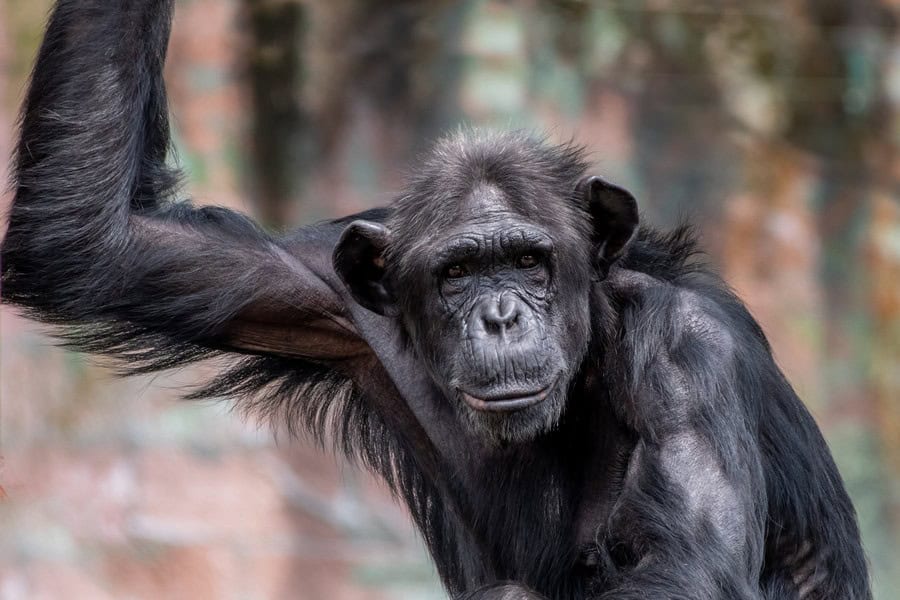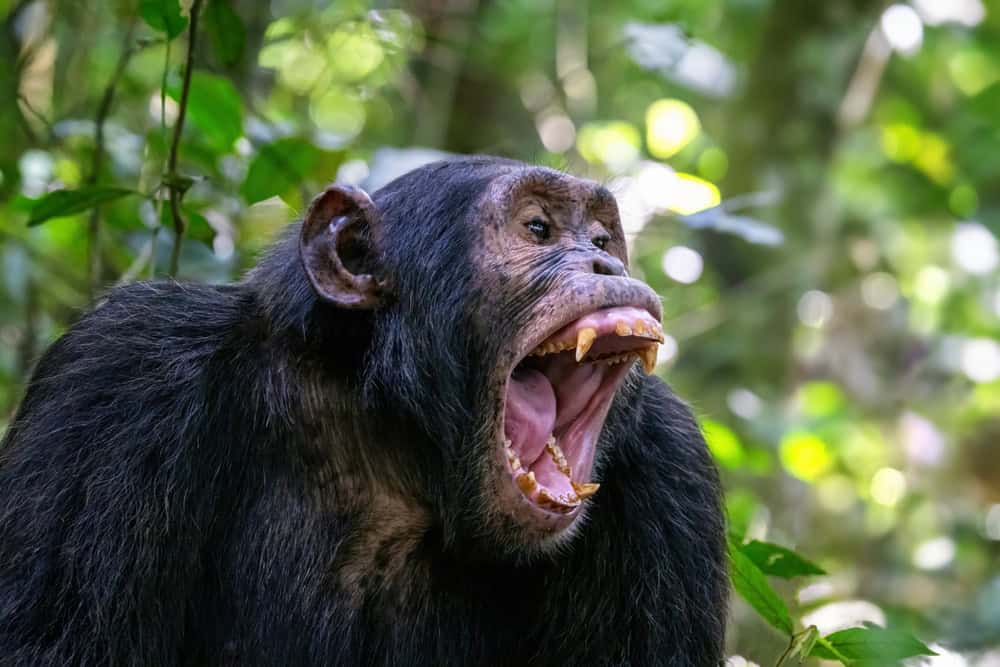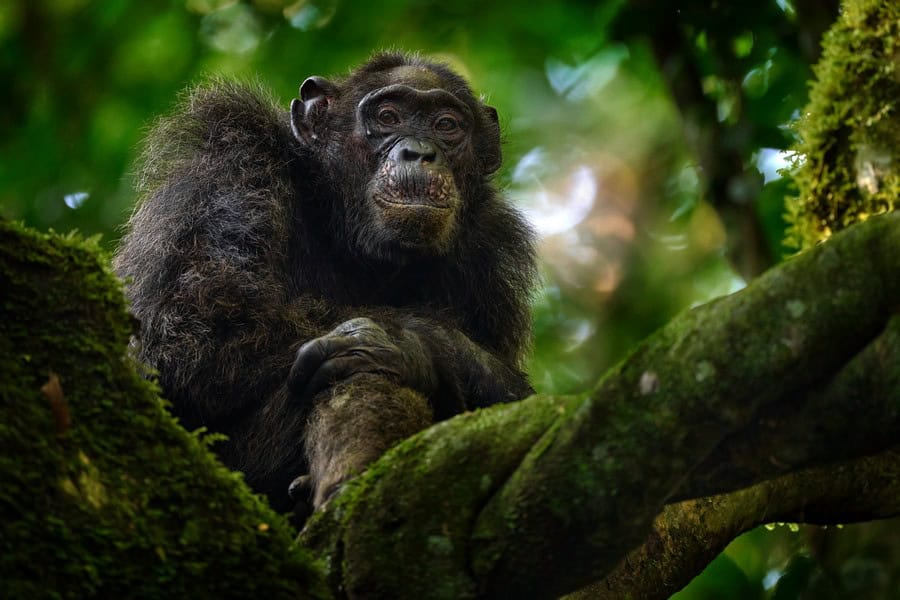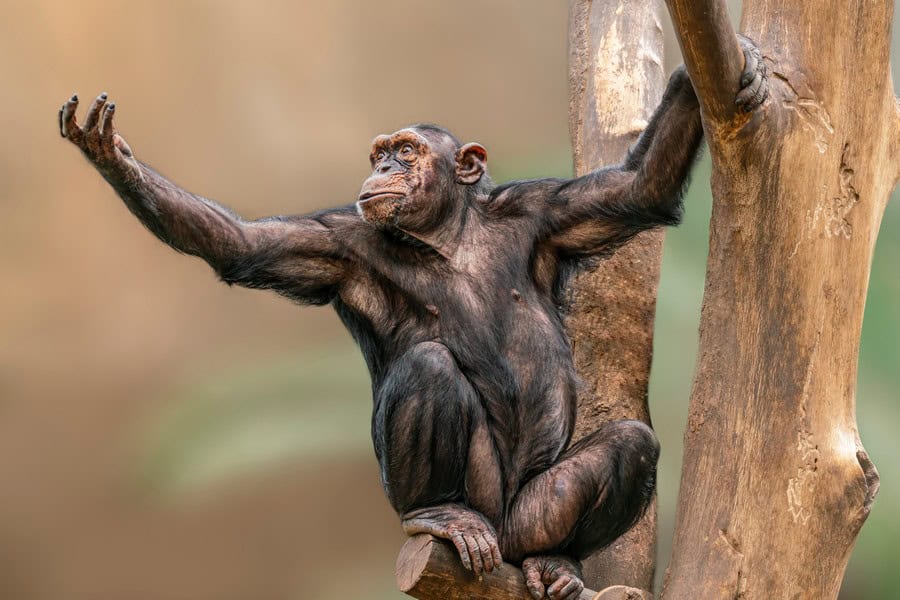
Chimpanzees, our closest living relatives in the animal kingdom, have long been known for their high intelligence and incredible strength.
Chimpanzee vs. Human: Size & Strength Comparison
Chimps stand between 4 to 5 feet (1.2 to 1.5 meters) tall when upright and weigh between 70 and 130 pounds (32 to 59 kilograms). The average human stands around 5 feet 4 inches to 6 feet (1.63 to 1.83 meters) and weighs between 130 to 200 pounds (59 to 91 kilograms). Therefore humans are about 1.3 to 1.5 taller than chimpanzees and weigh about 1.5 to 2 times more than chimps.

Despite their relatively small body size, modern studies show that chimps are about 1.5 to 2 times stronger than the average human when it comes to tasks like pulling or jumping. A chimpanzee’s strength is specialized for their arboreal lifestyle – swinging through trees, gripping branches, and navigating uneven terrain. While a chimp could likely lift or pull around 150 to 200 pounds (68 to 91 kilograms), which is still impressive given their size, lifting much heavier objects directly off the ground is not something they could realistically do.
Humans are generally better at lifting heavy weights in a controlled manner. This is due to our muscle distribution, upright posture, coordination between muscle groups, and the way our muscles are adapted for endurance and stability. So, while a chimpanzee may outperform humans in terms of pulling strength or climbing ability, humans have an advantage when it comes to lifting heavy objects.

Chimpanzee vs. Human in a Fight
In violent confrontations, chimps have been known to overpower humans with ease.
Chimpanzee attacks on humans can be extremely severe and sometimes fatal. They primarily attack using their large, sharp canine teeth to inflict deep and serious wounds. They can bite with considerable force, enought to amputate fingers or other body parts.

Their muscular arms and upper body strength allow them to hit or pound a person, causing blunt force trauma. Another method of attack involves grabbing and pulling. Chimpanzees possess tremendous grip strength, estimated to be up to five times stronger than that of a human. They can dislocate joints or fracture bones if they grab a hold and apply sudden, forceful movements. For example, one incident involved a chimp gripping a park ranger’s arm so tightly that the bones were shattered.
Chimpanzees often target vulnerable areas of the human body, particularly the face, limbs, and genitalia. There have been reports of chimpanzees gouging eyes, tearing off ears, noses, and lips, amputating limbs, hands, and fingers, and destroying genitals.

It is highly unlikely that a human – even a large, well trained and powerful fighter – could defeat a chimpanzee in a fight. The chimpanzee’s superior strength, agility, and natural instincts, combined with their aggressive nature, make it very dangerous.
Why So Strong? Muscle Composition
One of the key reasons for this strength difference is the type of muscle fibers chimps possess. Chimps have a much higher proportion of fast-twitch muscle fibers, which are designed for rapid, powerful movements. In contrast, humans have more slow-twitch fibers, which are better for endurance activities. This makes chimps very effective at short bursts of intense power, like climbing trees or swinging from branch to branch, while humans are more suited to long-distance walking or running.

Chimpanzees’ superior strength can also be explained by their muscle structure. Their muscles have longer fibers compared to humans, allowing for a greater range of motion and increased force output. This is especially advantageous in their natural habitat, where they need to rely on their arms and legs to climb and move through trees.
In the wild, chimps are known to be highly territorial and aggressive when provoked. They use their powerful arms and legs to slam, hit, and drag their opponents. They also use tools like rocks and branches to attack.
Early Studies on Chimpanzee Strength
The exaggerated claims about chimpanzee strength can be traced back to early 20th-century experiments, such as those conducted by biologist John Bauman in the 1920s. Bauman’s tests involved chimpanzees pulling on a dynamometer, a device that measures force. In his study, one chimp managed to pull 1,260 pounds (572 kilograms), far more than any of his human subjects. This result contributed to the belief that chimps were five to eight times stronger than humans. However, the methodology used in these early experiments has been criticized for being inaccurate and not directly comparable to human strength tests.

Later studies in the 1940s and 1960s corrected these earlier figures. Scientists discovered that while chimps are indeed stronger than humans, the difference is closer to 1.5 to 2 times.
How Evolution Shaped Chimpanzee Strength
Chimpanzees’ strength is an evolutionary adaptation. Their lifestyle, which involves swinging through trees, climbing, and foraging in a demanding environment, has shaped their muscular development. The higher percentage of fast-twitch fibers in their muscles allows them to generate more dynamic force, which is necessary for quick, agile movements in the treetops.

In contrast, human muscle evolution has taken a different path. As our ancestors adapted to walking upright and covering long distances, our muscles developed to support endurance rather than raw power. This shift is evident in our higher proportion of slow-twitch muscle fibers, which are more suited for sustained activity over time. While this has allowed humans to excel in activities like long-distance running, it also means that we sacrifice the brute strength seen in chimpanzees.




























































